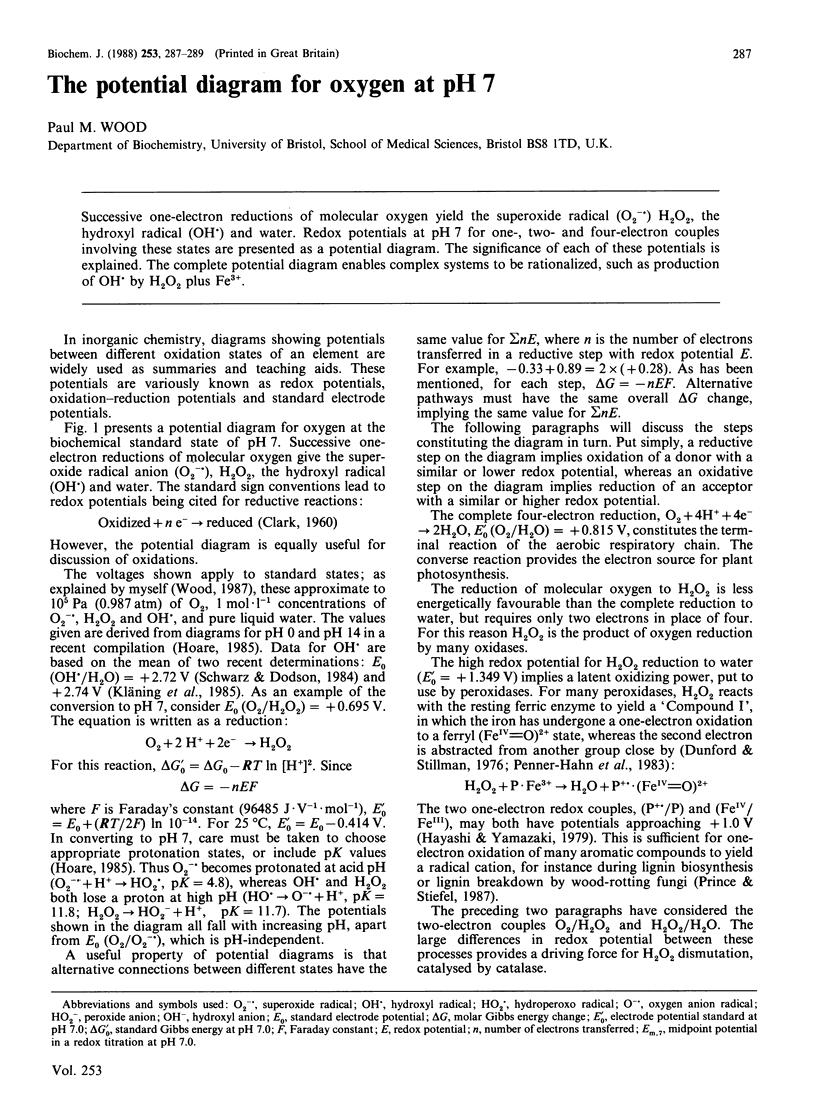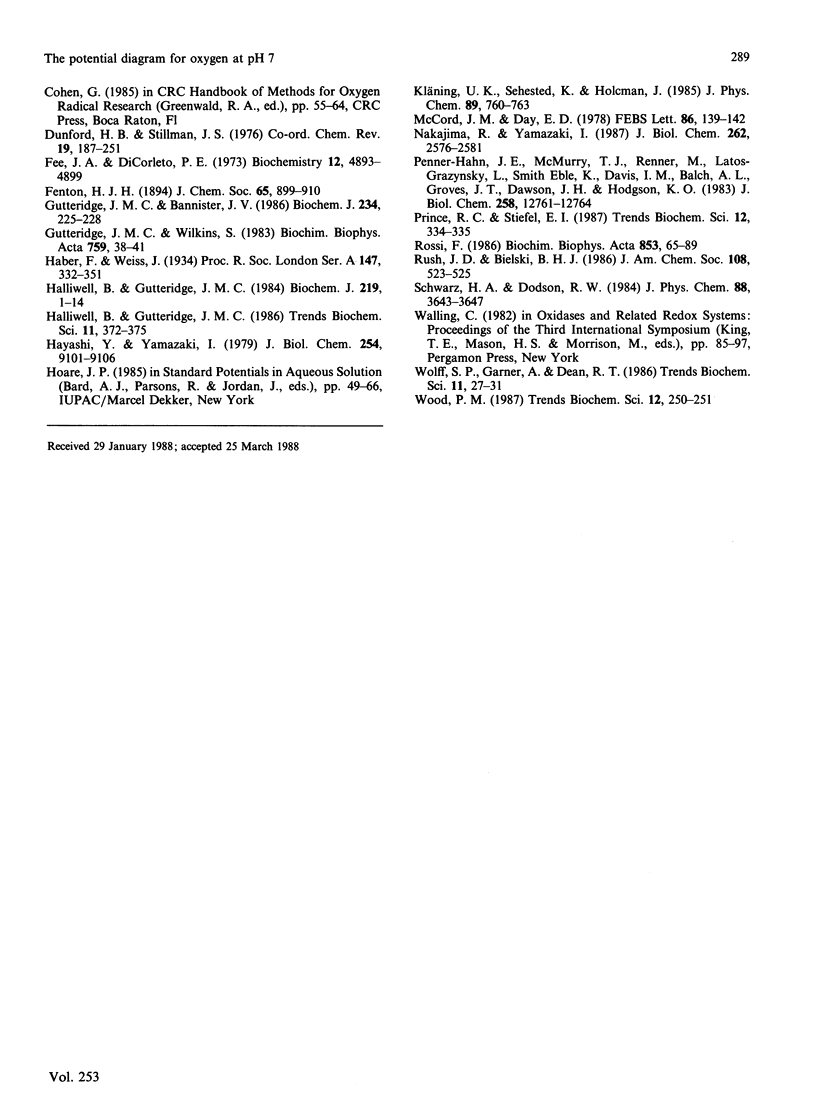Abstract
Successive one-electron reductions of molecular oxygen yield the superoxide radical (O2-) H2O2, the hydroxyl radical (OH) and water. Redox potentials at pH 7 for one-, two- and four-electron couples involving these states are presented as a potential diagram. The significance of each of these potentials is explained. The complete potential diagram enables complex systems to be rationalized, such as production of OH by H2O2 plus Fe3+.
Full text
PDF


Selected References
These references are in PubMed. This may not be the complete list of references from this article.
- Fee J. A., DiCorleto P. E. Observations on the oxidation-reduction properties of bovine erythrocyte superoxide dismutase. Biochemistry. 1973 Nov 20;12(24):4893–4899. doi: 10.1021/bi00748a013. [DOI] [PubMed] [Google Scholar]
- Gutteridge J. M., Bannister J. V. Copper + zinc and manganese superoxide dismutases inhibit deoxyribose degradation by the superoxide-driven Fenton reaction at two different stages. Implications for the redox states of copper and manganese. Biochem J. 1986 Feb 15;234(1):225–228. doi: 10.1042/bj2340225. [DOI] [PMC free article] [PubMed] [Google Scholar]
- Gutteridge J. M., Wilkins S. Copper salt-dependent hydroxyl radical formation. Damage to proteins acting as antioxidants. Biochim Biophys Acta. 1983 Aug 23;759(1-2):38–41. doi: 10.1016/0304-4165(83)90186-1. [DOI] [PubMed] [Google Scholar]
- Halliwell B., Gutteridge J. M. Oxygen toxicity, oxygen radicals, transition metals and disease. Biochem J. 1984 Apr 1;219(1):1–14. doi: 10.1042/bj2190001. [DOI] [PMC free article] [PubMed] [Google Scholar]
- Hayashi Y., Yamazaki I. The oxidation-reduction potentials of compound I/compound II and compound II/ferric couples of horseradish peroxidases A2 and C. J Biol Chem. 1979 Sep 25;254(18):9101–9106. [PubMed] [Google Scholar]
- McCord J. M., Day E. D., Jr Superoxide-dependent production of hydroxyl radical catalyzed by iron-EDTA complex. FEBS Lett. 1978 Feb 1;86(1):139–142. doi: 10.1016/0014-5793(78)80116-1. [DOI] [PubMed] [Google Scholar]
- Nakajima R., Yamazaki I. The mechanism of oxyperoxidase formation from ferryl peroxidase and hydrogen peroxide. J Biol Chem. 1987 Feb 25;262(6):2576–2581. [PubMed] [Google Scholar]
- Penner-Hahn J. E., McMurry T. J., Renner M., Latos-Grazynsky L., Eble K. S., Davis I. M., Balch A. L., Groves J. T., Dawson J. H., Hodgson K. O. X-ray absorption spectroscopic studies of high valent iron porphyrins. Horseradish peroxidase compounds I and II and synthetic models. J Biol Chem. 1983 Nov 10;258(21):12761–12764. [PubMed] [Google Scholar]
- Rossi F. The O2- -forming NADPH oxidase of the phagocytes: nature, mechanisms of activation and function. Biochim Biophys Acta. 1986 Nov 4;853(1):65–89. doi: 10.1016/0304-4173(86)90005-4. [DOI] [PubMed] [Google Scholar]


